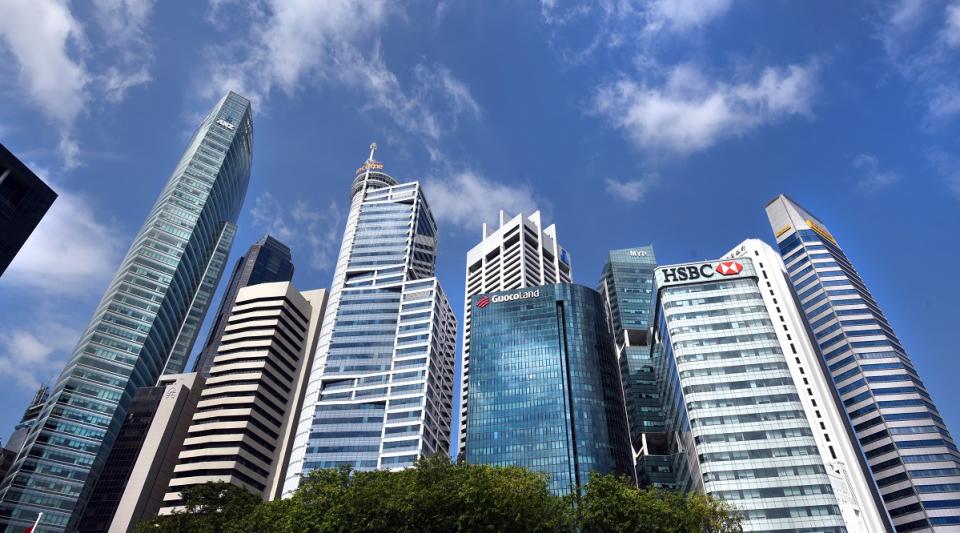Singapore’s housing prices and rental growth could slow in 2H2023: Bloomberg Intelligence

Office rents could rise less than 2% in 2H2023 and grow up to 4% in 2023.
Singapore’s home prices could rise less than 2% in 2H2023, and go up to 5% in 2023 amid the two property cooling measures that took place in the same year, says Ken Foong, an equity analyst at Bloomberg Intelligence specialising in Asean real estate.
In February, deputy prime minister (DPM) and finance minister Lawrence Wong announced that the government will introduce higher marginal buyer stamp duty rates for higher-value residential properties as well as non-residential properties.
In April, the government said that it will be increasing its additional buyer’s stamp duty (ABSD) rates for both citizens and foreign property buyers.
The ABSD hike may lead to slower growth in prices, although the move is unlikely to see a big drop, says Foong, who notes that there was a limited impact from the stamp duty hike in February while foreigners were the most impacted by the latest ABSD hike in April.
He adds that looking back at the more recent cooling measures, of which there were four since December 2021, there was no real drop in residential prices although price growths were muted.
To be sure, the introduction of the total debt servicing ratio (TDSR) was a more effective move, notes Foong. When the TDSR was introduced in late June 2013, property prices fell some 12% or 13%.
Meanwhile, amid the high inflationary environment, Foong suggests that residential properties can be a hedge against inflation for homeowners as there is still room for residential prices to grow.
Within the market, the supply-demand dynamics with the take-up rate from January to April this year rising in tandem with the number of new launches during the period.
Rental growth may slow to less than 5% in 2H, and increase between 10% to 15% in 2023
Rental growth in Singapore may slow to a rate of less than 5% in 2H2023 and grow by 10% to 15% in 2023, says Foong.
The market is starting to see a pushback from tenants as landlords are trying to increase their rents, he adds.
That said, a higher supply of homes could moderate rental growth with about 1.86 times more new homes expected to be completed in 2023, compared to 2022. The second half of 2023 can see “a lot of new launches in the market” with three or four projects going live in the month of July itself, says Foong.
Meanwhile, the Singapore retail property sector remains a bright spot with recovery sustaining despite the GST hike. This is thanks to the economic recovery as well as the return of tourism, which could fuel retail sales growth.
Retail property sector
Furthermore, Foong also sees favourable supply-demand dynamics for the retail sector.
The supply for retail floor space is expected to see a compound annual growth rate (CAGR) of 0.8% from 2022 to 2025, compared to the 2.0% CAGR between 2009 to 2019. In 2023, three malls are slated to open in Sengkang, Holland Village and Woodleigh while Pasir Ris Mall is expected to open in 2024. CanningHill Square in Clarke Quay and the Punggol Digital District is scheduled to open in 2025.
These malls are either within large catchment areas or integrated developments, which means demand can be easily soaked up by supply, notes Foong.
Office market
Rental growth could be muted for Singapore offices although occupancies may remain high with broad-based demand.
Office rents could rise less than 2% in 2H2023 and grow up to 4% in 2023. The demand could be mainly from the financial services sector or family offices coming into Singapore, says Foong.
In addition, ancillary services related to family offices such as firms handling taxation, legal, insurance and property services could expand along with the growth in family offices in Singapore, he adds.
Besides, sectors recovering from the pandemic such as retail and hospitality may also expand their office needs.
In 2023 to 2025, there will be new office supplies in the form of IOI Central Boulevard Towers, which will open in 2H2023. The redevelopment of Keppel Towers and Keppel Towers 2 is slated to be completed by 2024 while the redevelopment of Shaw Tower and Newport Tower is scheduled to be completed in 2025.
The trouble in the banking and tech sector may not have a large impact on the demand for offices as well.
The banking sector has already been right-sizing their office spaces in the past few years with DBS Bank and Standard Chartered giving up some of their spaces, notes Foong.
Companies in the tech sector are also more likely to give up their spaces in the city fringe and business parks instead of giving up their spaces in the core CBD area.
When IOI opens, Amazon will take up around 30% of the space. Morgan Stanley also has plans to move over and occupy around 8% of the building.
See Also:
Click here to stay updated with the Latest Business & Investment News in Singapore
Morgan Stanley plans move to new Singapore office in growth boom
Non-interest income recovery the next growth lever for local banks: CLSA
Get in-depth insights from our expert contributors, and dive into financial and economic trends

 Yahoo Finance
Yahoo Finance 